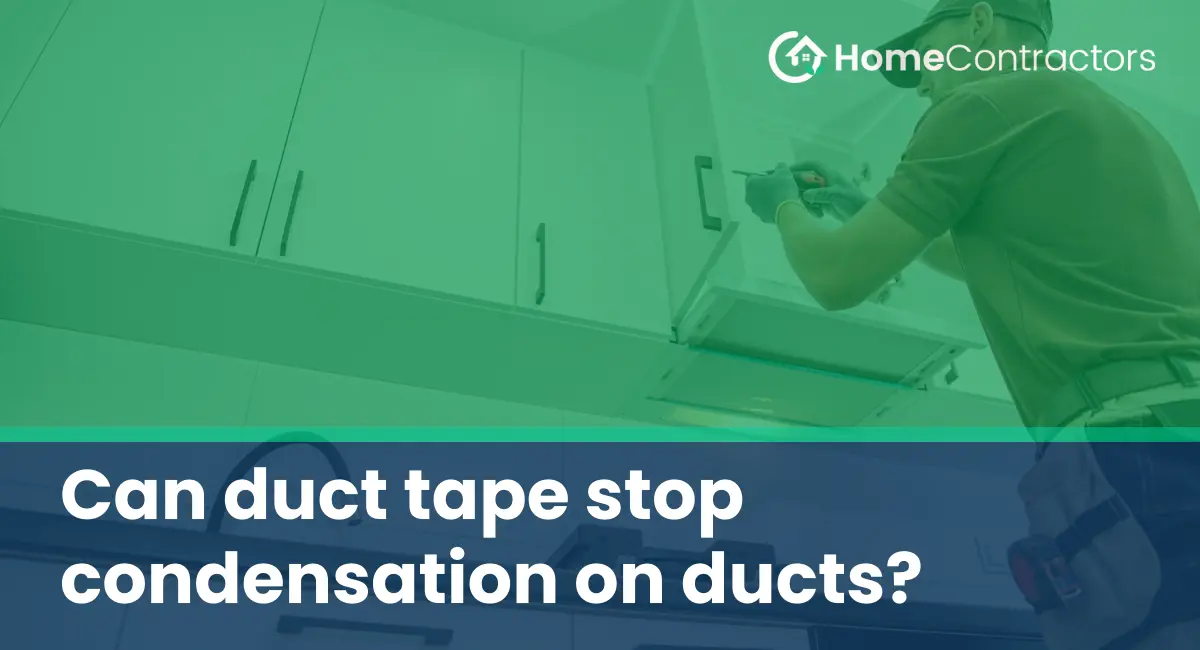Let’s dive into this topic and explore whether duct tape is a reliable solution or not.
Understanding Condensation on Ducts
Before we can determine whether duct tape is the answer to preventing condensation on ducts, it’s important to understand why condensation occurs in the first place. When warm, humid air comes into contact with the cool surface of an air duct, condensation occurs. This typically happens in areas where ductwork is installed in unconditioned spaces, such as attics, basements, or crawl spaces. As a result, water droplets form on duct surfaces and may eventually accumulate or drip, leading to various problems.
The Role of Insulation
One of the most effective ways to prevent condensation on ducts is by ensuring proper insulation. Insulation acts as a barrier between the warm, humid air and the cool surface of the ducts, preventing condensation from forming. Installing insulation around the ductwork can significantly reduce the risk of condensation and its associated problems.
Duct Tape: An Illusion of a Solution
Despite its name, duct tape is not designed for sealing ducts and preventing condensation. In fact, duct tape is not suitable for use on HVAC ductwork as a long-term solution. Although it may offer a temporary fix for small leaks or cracks, duct tape is not durable and can break down over time. Moreover, it cannot effectively prevent condensation as it does not provide insulation properties.
The Risks of Using Duct Tape
Using duct tape on ducts as a measure to stop condensation can be risky and ineffective. Duct tape tends to degrade when exposed to fluctuating temperatures and moisture. Over time, it becomes brittle and loses its adhesive properties, which can lead to detachment and the re-emergence of condensation issues. When duct tape fails, it can also release harmful volatile organic compounds (VOCs) into the air, contributing to reduced indoor air quality.
Finding Effective Solutions
Instead of relying on duct tape to solve condensation problems, it’s essential to explore alternative solutions that are designed for this specific purpose. Here are a few suggestions to consider:
- Professional HVAC Services: Contact an HVAC professional to assess your system and provide expert recommendations for addressing condensation issues. They can properly insulate the ductwork and make any necessary repairs or upgrades.
- Insulation and Vapor Barriers: Install proper insulation around the air ducts to prevent warm, humid air from coming into contact with the duct surfaces. Additionally, vapor barriers can be used to further reduce the risk of condensation.
- Duct Sealants: Consider using specialized duct sealants that are designed to withstand the varying temperatures and moisture levels typically found in duct systems. These sealants provide a long-lasting and effective solution for sealing ducts and preventing condensation.
While duct tape may appear to be a convenient quick-fix solution for condensation on ducts, it is not a reliable or durable option. It lacks the insulation properties required to prevent condensation effectively. Additionally, duct tape can deteriorate over time, releasing harmful compounds and causing potential health risks. Therefore, it is crucial to consult an HVAC professional and explore appropriate alternatives, such as insulation, vapor barriers, and specialized duct sealants, to address condensation issues and ensure the optimal performance of your HVAC system.
